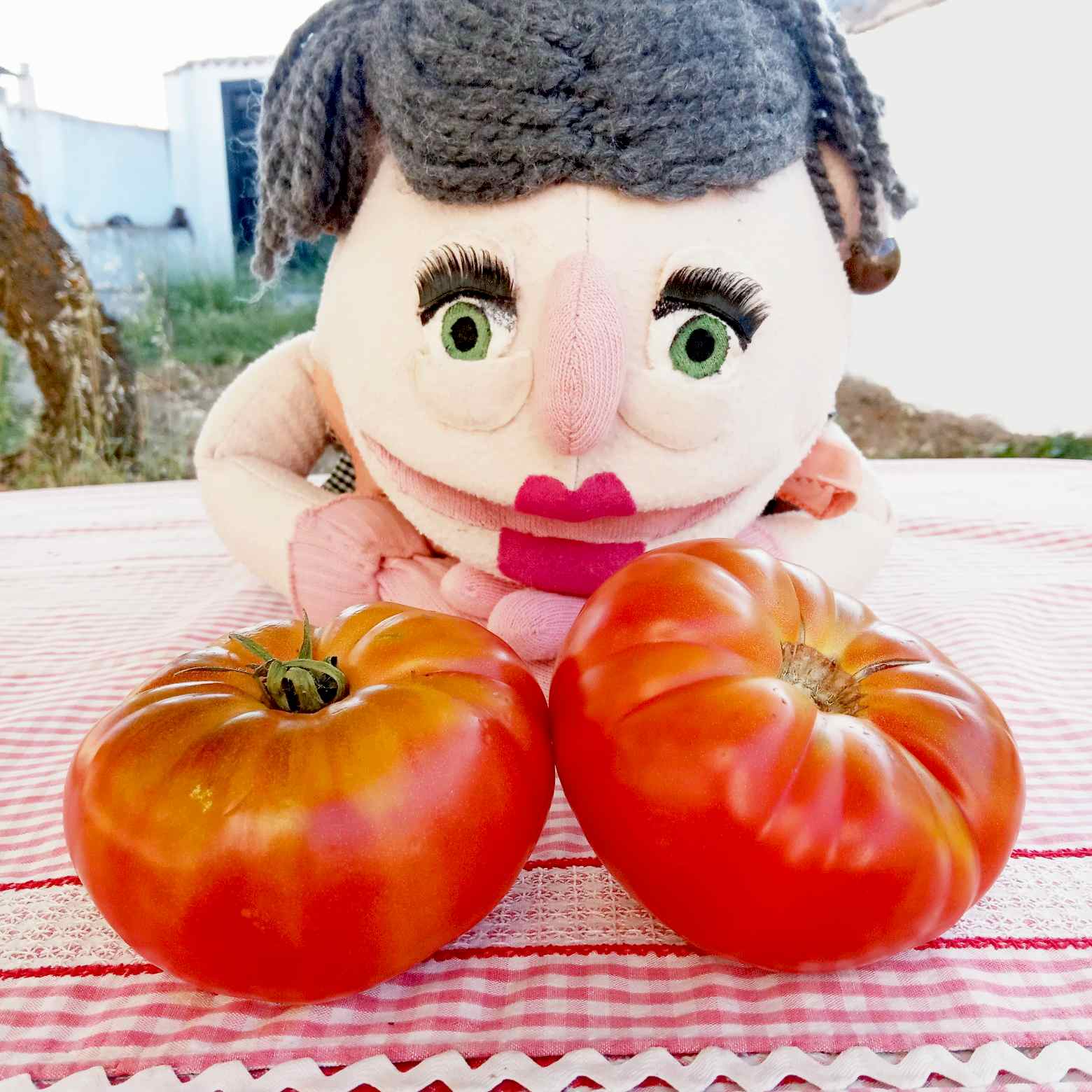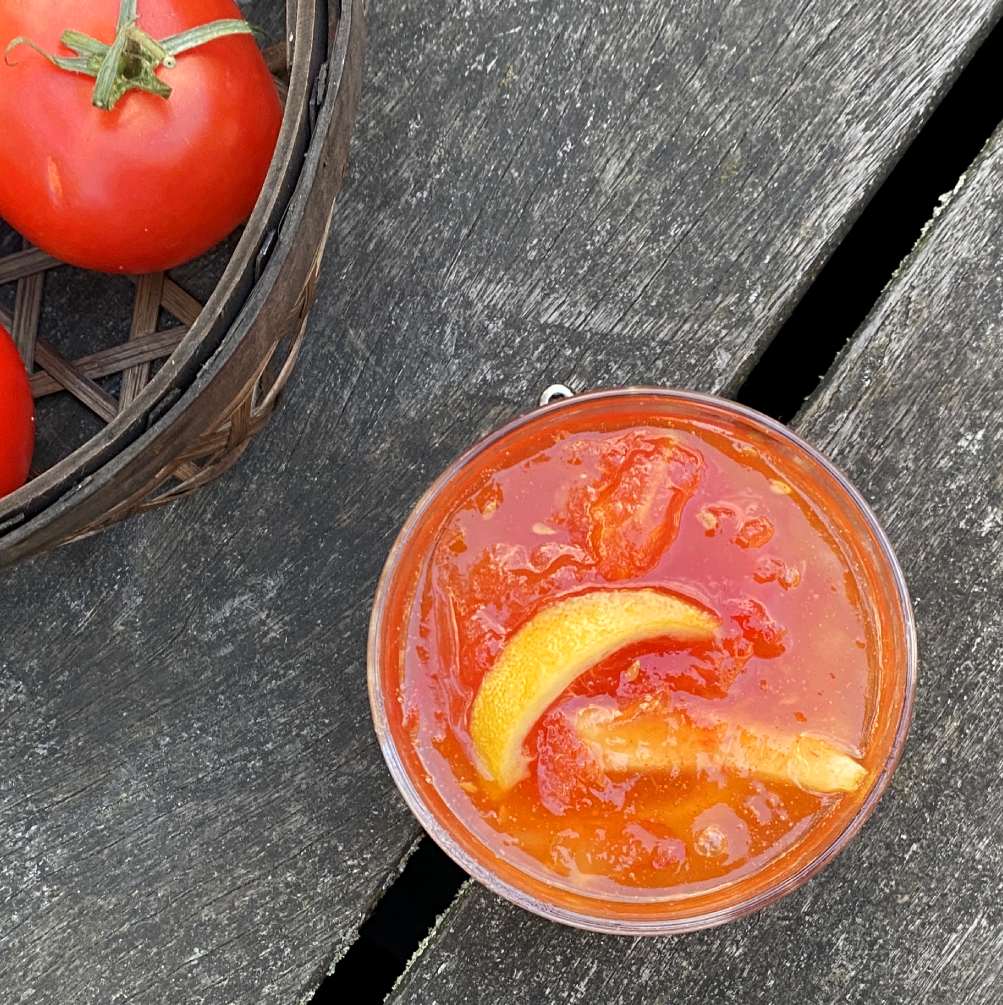Tomato // vegetable (botanically a fruit)

🌱🍅🤔 Did you know how not to waste ripe tomatoes from the garden? Freezing is the easiest long-term storage for ripe tomatoes with and without skins. They can be frozen raw or cooked, whole, sliced, chopped, or puréed. But because freezing changes the texture, don’t expect to use them in a salad or sandwich.
☀️ Tomato season is in full swing! Grandma Sita’s homegrown ripe tomatoes have a bright red color, juicy texture, and sweetness. All varieties are always welcome in her kitchen to make fresh gazpacho, a soup made of raw vegetables and served cold, usually with a tomato base, and even helps you run out of dry, stale leftover bread. There is no summer without yummy gazpacho!
👩🍳 This vegetable, which botanically counts as a berry, is an all-time favorite! Ripe tomatoes are incredibly versatile and provide much flavor and juiciness whether roasted, marinated, blended into a soup, turned into a chutney or eaten raw. And there is no line about what you can make tomatoes into main dishes, appetizers, or even desserts!
📗 The tomato plant originated in western South America and Central America. There are currently more than 10,000 varieties of tomatoes, these come in a variety of colors including pink, purple, yellow, white, and even black.


👵❤️ Grandma Sita’s tips:
*Leftover gazpacho can be transferred to a food storage container and refrigerated for up to 3 days or frozen for up to 3 months.
*To lengthen the lifespan of summer tomatoes, store them on the kitchen counter at room temperature and turn them shoulders down out of direct sunlight. There are many ways to store tomatoes, you can dry, can, freeze, grill, and stuff them.
♻️ Cold plant-based soups are the perfect way to cook with zero waste using seasonal ripe fruits and veggies. All of us can act at home to reduce our waste and every single one counts. This summer make gazpacho, not waste!
🌎 Eating local and seasonal fruit and vegetables helps to reduce food waste, saves resources, improves food quality and healthy habits, and boosts the local economy.
